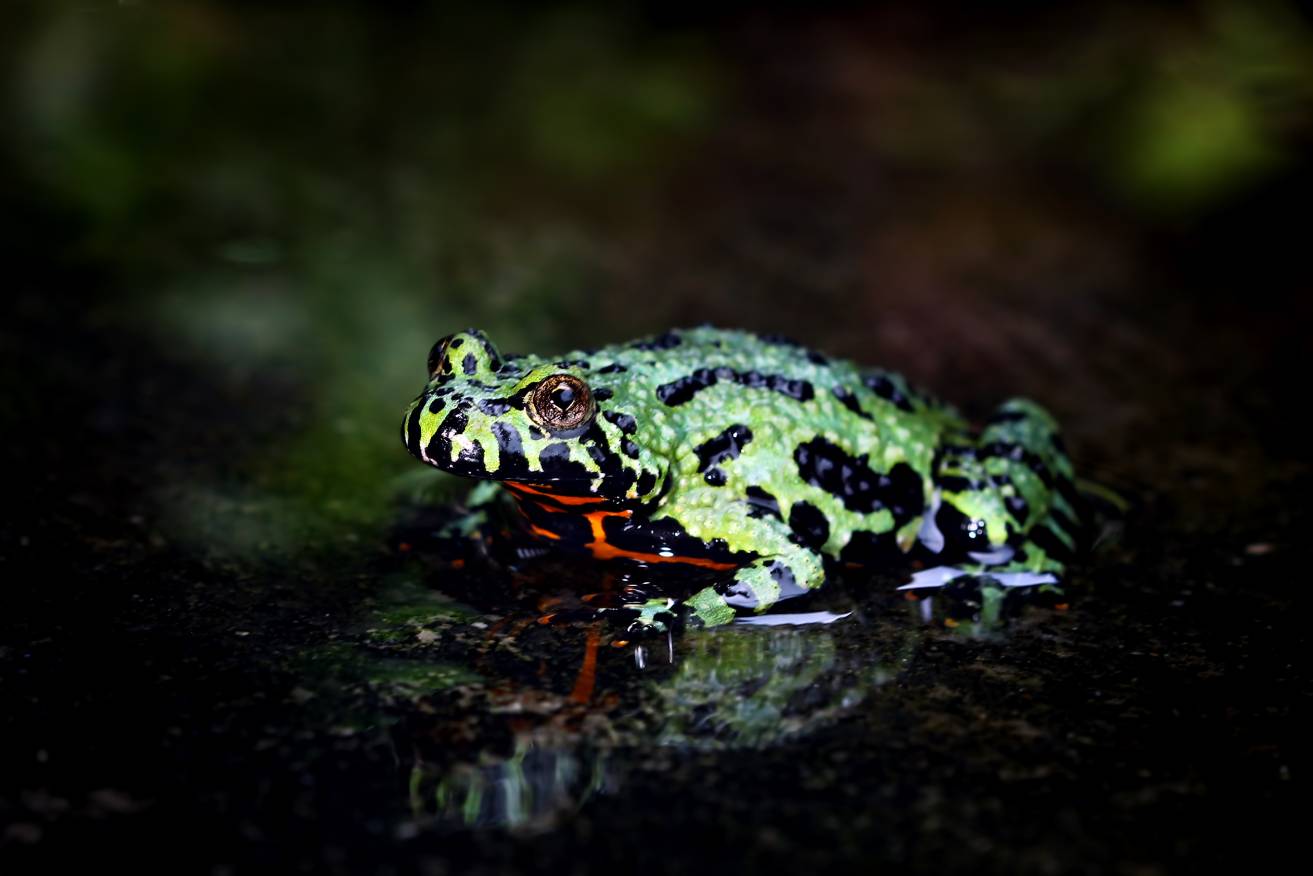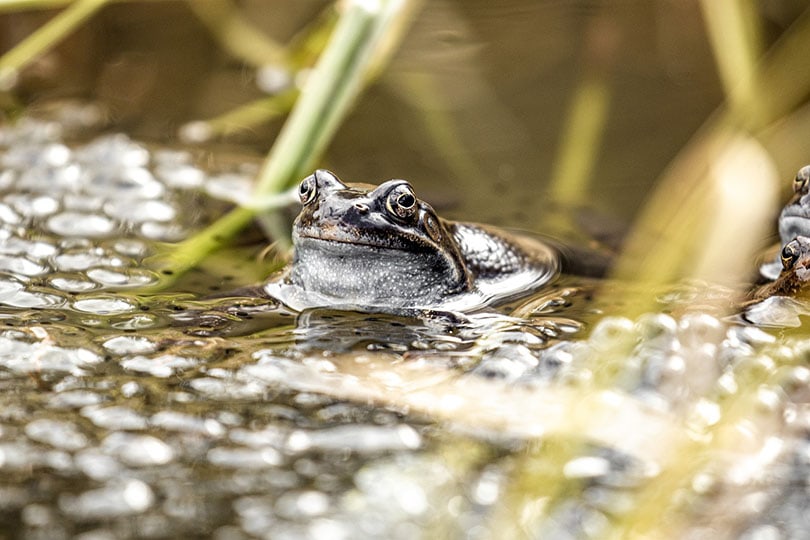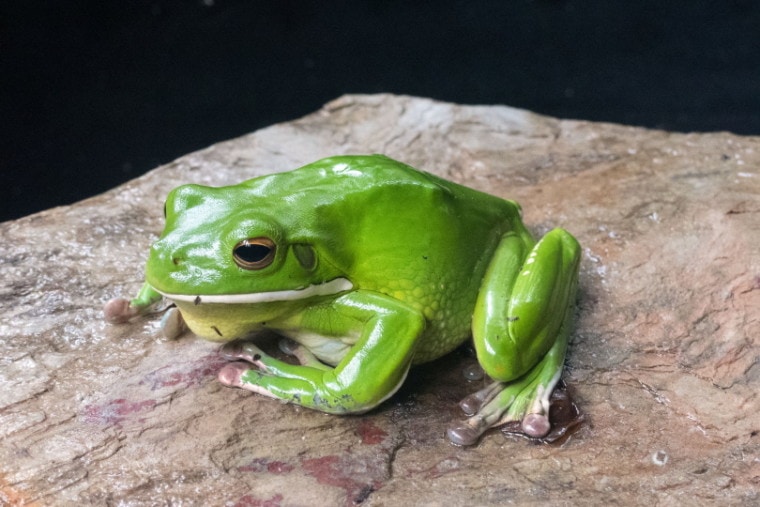
The white-lipped tree frog is a bright green color with distinctive white lips. It is also the largest tree frog in the world, also holding the name giant tree frog. Because it can grow to 5 inches in length, it requires a larger terrariump than other types of frogs and is considered an intermediate-level pet.
It is carnivorous, requires adequate lighting and steady heat levels, and is arboreal, which means that it likes to climb on top of things to survey its home. Read on to determine whether the white-lipped tree frog is a suitable pet for your requirements, and what you need to keep one and ensure that it is happy and healthy.
 Quick Facts about White Lipped Tree Frogs
Quick Facts about White Lipped Tree Frogs
| Species Name: | Nyctimystes infrafrenatus |
| Family: | Pelodryadidae |
| Care Level: | Intermediate |
| Temperature: | 75° F |
| Temperament: | Docile |
| Color Form: | Leaf green with white lips |
| Lifespan: | 10 years |
| Size: | 3–5 inches |
| Diet: | Insects |
| Minimum Tank Size: | 15” x 15” x 20” |
| Tank Set-Up: | Tank, branch, heat mats, thermostat, uvb light, water dish |
| Compatibility: | Can live with other frogs |
White Lipped Tree Frog Overview
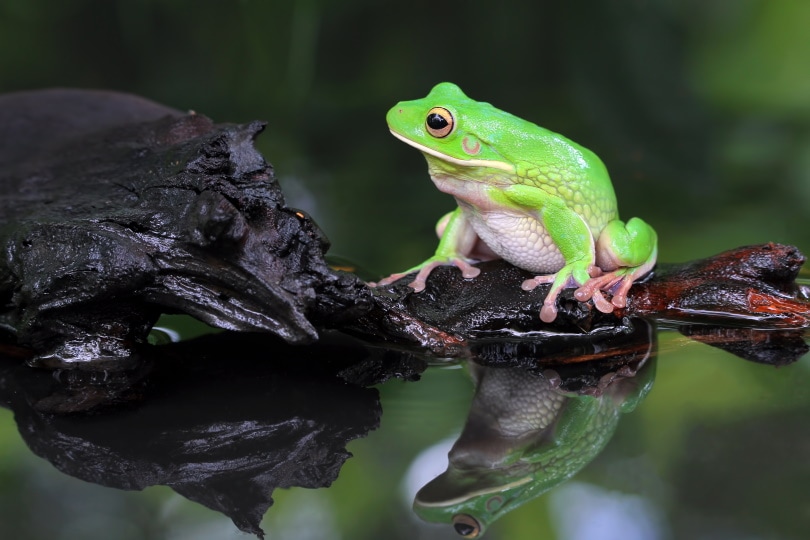
The white-lipped tree frog is a large tree frog that originates from Australia, Indonesia, and Papua New Guinea. Its size, and the fact that it is arboreal, has earned it the name of the giant tree frog. It can be found in most areas where trees are abundant, including rainforests and wet forests. They may also be found in parks, fields, and some gardens. The species is not considered endangered because it is found in a lot of different regions and has adapted to various climates and living conditions.
They live up to 10 years, are relatively low maintenance, and can be handled minimally. This combination makes them quite popular as amphibian pets. However, they do grow large, which, in turn, means that they require a large enclosure. They also need live feedings, and it is almost impossible to accurately sex a tree frog, which means that a lot of captive breeding programs tend to be unsuccessful.
The frog can be handled, but only minimally, and you must ensure that you wash your hands before and after handling them. Handling should be kept to a minimum because, as with most amphibians, too much human contact can stress them out and make them ill.
How Much Do White Lipped Tree Frogs Cost?
White-lipped tree frogs are not expensive. You should be able to buy them for around $15 each. However, the vivarium and equipment will be where the greatest expense originates, and you should expect to pay around $200 for a decent setup and initial food. You may be able to get specialist reptile or exotic pet insurance, costing a few dollars per month, which will ultimately keep vet and medication costs down.
Typical Behavior & Temperament
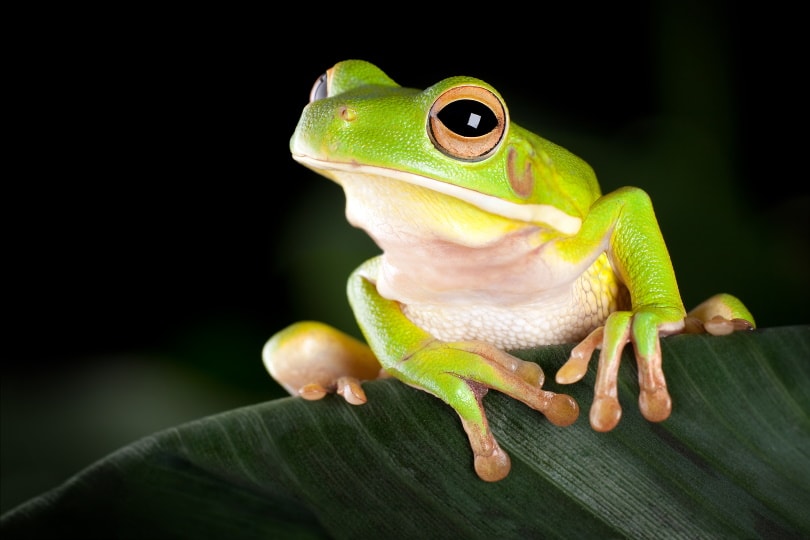
Too much handling can be stressful for any amphibian, but the white-lipped tree frog is slightly more open to being handled. It will happily get on with its business in the terrarium, regardless of your proximity, but you should only handle the frog every other day for a maximum of 10 minutes at a time, and don’t forget to wash your hands before and afterward.
Appearance & Varieties
The white-lipped tree frog has a distinctive look. It has a green color that is common in a lot of species of tree frogs. This is designed to match the color of leaves and enables the frog to blend into the leaf to avoid being spotted by predators. This species is so-named because it has white lips. In fact, the white stripe runs down the entire lower jaw and the side of the frog’s head. During mating season, the frog might adopt a salmon-pink color on its arms.
Tadpoles are dark brown and they have a cream stripe on the head.
It is Australia’s largest native frog and is widely credited with being the world’s largest species of tree frog. Generally, the female of the species is slightly larger than the male, but it is very difficult to see the frog, and the size difference is no guarantee.
How to Take Care of White Lipped Tree Frogs
Habitat, Tank Conditions & Setup

The breed is considered relatively easy to care for. To ensure your amphibian pet has everything it needs, you will require the following.
Tank
As the largest tree frog, the so-called giant tree frog does grow quite large and can reach a length of 5 inches. As such, your tree frog will require a terrarium at least 15” x 15” 20”. The tree frog is arboreal and will need vertical branches and elevation to stay happy and content. A glass terrarium is better than wood and other materials because the glass does a good job of letting heat out and ensuring that the tank is a good temperature.
Decoration
Although the frog doesn’t need any decoration, as such, they do require branches. Offer pieces of wood, branches, and vine. These will offer vertical space for your frog, allowing them to climb up and survey their tank and their home. You can use fake plants for a natural look or use wooden ornaments for a more decorative finish.
Heating

The giant tree frog needs a temperature of approximately 75° F. If you do have a glass tank, you can get this temperature by placing a heat mat on the side of the tank. This will also ensure that there is a heat gradient within the tank, meaning that one side is hot while the other side is comparatively cooler. This enables the frog to swap to a cooler section and regulate its temperature. You can place a basking bulb but the temperature should not go more than a couple of degrees above the 75° F desired temperature.
Lighting
Jungle animals require UVB light to mimic their natural habitat. While they may live under the cover of tree canopies, they would still get a lot of UVB light naturally. Offer a UV tube or compact light to ensure that your white lip can adequately synthesize the required vitamin D.
Do White Lipped Frogs Get Along with Other Pets?
The white-lipped frog is considered a docile amphibian and will usually get along with others of its own kind. Because it is so difficult to tell the male and female of the species apart, there are no limitations to the number that you keep together, just ensure that they have enough room, plenty of oxygen, and they have the climbing and living space that each frog requires.
You can also keep the giant tree frog with other species of frog, although you must ensure that the other species are considered sociable. The White’s tree frog, for example, is considered suitable for living with other species while it is young, but will attack smaller frogs when it gets older. While this doesn’t include the white-lipped tree frog, which will be the largest in a tank, it could still lead to animosity.
What to Feed Your Giant Tree Frog
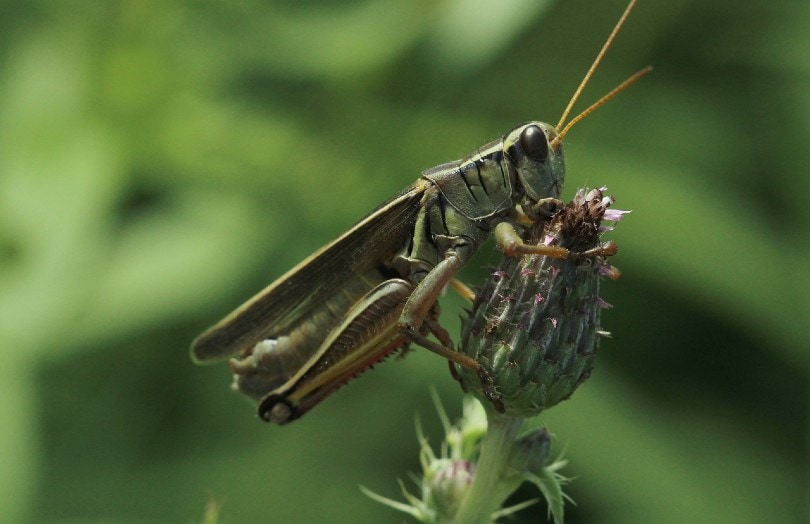
The giant tree frog is carnivorous. It should be given a diet of live foods, primarily insects, and these should be high in protein. Crickets are a common food source, along with hoppers. Mealworms and other types of worms can be fed, occasionally, as a treat and to offer some diversity in the diet.
The live food you give should be gut-loaded. This means feeding the live food a nutrient-rich supplement before feeding to your frog. If you buy live food from a pet store or other source, it may come gut-loaded but you will need to continue the process at home. If you breed the insects yourself, you will obviously have to take on the mantle of gut loading nutrients yourself.
Mist the tank every morning. This will help provide the water that your frog requires, but you should also provide a water bowl that can be used to offer a source of fresh water for your little one.
Keeping Your White Lipped Tree Frog Healthy

Like most frogs, the breed can become obese with overfeeding so monitor the amount you give. If you feed pinkies, ensure that you only give them once a month. Feed small frogs every two days. Feed large frogs slightly less than this, so every two or three days.
Ensure that you keep the tank at the right temperature. If it gets too hot, it can lead to dehydration and other problems for your frog. If you provide a water bowl, it should be shallow because this species of frog is a poor swimmer.
Mist the morning and dampen the substrate, to raise the humidity level in the tank and to ensure a healthy living environment. The humidity level should be maintained between 60% and 70%.
You should avoid feeding the tree frog wild insects that you have caught. They could make the frog ill. It is necessary to keep the terrarium clean, too, to prevent bacteria and other unwanted visitors from causing illness.
Breeding
The frog will reach sexual maturity by the age of 2. Differentiating sexes is very difficult, which means that breeding programs can be hit and miss, although chances are good that if you keep several frogs together, you will have some male and some female. Only the males call, and the females are known to be slightly larger than the males when both are mature.
Eggs will begin to hatch within about 36 hours and the tadpoles will start to move around after another 2 to 3 days. They transform after about a month, although some can take two or even three months.
The young are vigorous feeders and are usually given a diet of ¼-inch crickets.
 Are White Lipped Tree Frogs Suitable For You?
Are White Lipped Tree Frogs Suitable For You?
The white-lipped tree frog is the largest and it has an attractive white stripe down the side of its jaw and head. It can grow to 5 inches in length and does require quite a sizable terrarium as a result of this.
Because it is an arboreal frog, the enclosure will need to be tall and include branches or vines that the frog can climb and use to survey its home. Ensure a good diet, supplement by gut loading, and keep handling to a minimum to ensure the best health for your amphibian pets.
Related Reads:
Featured Image Credit: Connie Kerr, Shutterstock

 Quick Facts about White Lipped Tree Frogs
Quick Facts about White Lipped Tree Frogs